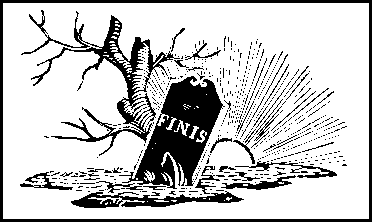Tierra del Fuego
Paul Magee
(University of Illinois)

- The visitor to Tierra del Fuego today, traveling along the route taken by Magellan, Darwin, and even Bruce Chatwin, should pack plenty of sunscreen. Due to severe ozone depletion, the sub-Antarctic sky now rains down upon the island the fire it was once seen to emanate. From the start of the colonial era to the end of this industrial one, Tierra del Fuego anecdotally figures a Europe that has been turned on its head. It is now a showcase for the world's densest concentration of ozone-blind sheep.
French tourists flock to Ushuaia, one of the towns in Tierra del Fuego, in droves. Turns out
there is a TV program in France called "Ushuaia," which features people engaging in "extremes" and visiting "crazy" places....We laughed at how ridiculous these tourists were, flying all the way around the world, just to say that they had stepped into their own stupid documentary.
Of course, the people laughing include one who calls himself an ethnohistorian, who has come to the End of the World to figure out why people come to the End of the World. Magee says as much: "To laugh at these French clowns ... is, for the ethnographer, to become them." The ethnohistory he is preparing will "be all the more critical if I translate their travel discourse back into the broken English I speak when I play at not being myself."
His non-guide guide begins with a favored book from his youth, Bruce Chatwin's In Patagonia, "ninety-seven travel fragments decidedly lacking in guidance:"
The only meaning articulated in this profoundly skeptical book is the pointlessness of meaning itself.
Indeed, Chatwin came to Patagonia, it turns out, in order to find himself, and ended up not doing so. What Am I Doing Here is the title of one of Chatwin's essays. Without the question mark.
It's the perfect circle, people traveling to the End of the World so they can say that they traveled to the End of the World. Once there, there is little to do except buy the T-Shirt and maybe a plastic penguin, and then turn around and go back from whence they think they might have come.
Magee and From Here to Tierra del Fuego is a gift to the reader brought back from this long journey to nowheresville. The author is an Australian, scarcely thirty years old, and has built here paragraph after paragraph of mystery suddenly appended to discourses that open up in savage brilliance. In one sequence, we have disquisitions on nationhood, the religion of the morning newspaper, the English national postal system (created by Sir Rowland Hill in 1840), "the fictional community of nationhood," Argentina's and Chile's almost coming to wars over this benighted land in 1901, 1968, and 1978 --- and the chilly thought that "people have been prepared to die for these imagined communities."
Most every country --- including Chile and Argentina --- have monuments to the unknown soldier. In one paragraph, Magee manages to capture the wonder and futility of such monuments (which, he points out, beg to be defaced). Ever the traveler, he journeys through the etymology of the word "monument," along with known vs. unknown soldiers, quotes from Benedict Anderson and Robert Musil, and the final main:
Running into the present enshrined in this particular Plaza del Mayo is to run into an empty space. The plaza is a cenotaph in two senses, empty of both the living and the dead. For Anderson "no more arresting" figurations of nationalism exist than monumental spaces like these. He has etymology on his side --- the word monument derives from the Latin monere, the basic meaning of which is "to put in mind," with further connotations of threat and coercion. Yet what could be more arresting than the thought that such stately monuments, minding their own business, fail to arrest any imaginings at all? Indeed, even known soldiers fall prey to the anonymity of national imagining. Witness those endless miles of monumental dedications, informing nobody as usual, in Robert Musil's words, "from eighteen hundred and such and such to eighteen hundred and a little more the unforgettable So-and-so lived and created here." The exemplarity of the unknown soldier monument may well reside in its monumental emptiness, a lifelessness it shares with so much other national iconography.
These two-hundred or so words have a poetry not unlike the poetry of Marshall McLuhan, James C. Scott, and Joyce, enmeshed in an exquisite balance and repetition of words like "empty," "arrest," "monument" (and "monumental"), "nobody" (and "unknown"), "lifelessness" and life.
Magee concludes:
What do you do with Anderson's theories, the moment you characterize the modern culture of nationalism as the tomb of the unknown monument?
By conjoining such unlikely images as sheep blinded by the destruction of the ozone layer and travelers in the Ushuaian airport complaining that they feel just like sheep; or Darwin's complaint that the Fuegians were the closest of all humans to apes against sophisticated entries in an English-to-Fuegian dictionary; or such loaded sentences as "The anthropological pilgrim, in the modern world," journeyed back "to places where man was to find nothing but himself."
In these fine aperçus, Magee has constructed a non-travel travel book which should (but never will be) sold in the curio shops in Ushuaia for all those travelers who went there just to say they had thought they had gone there.